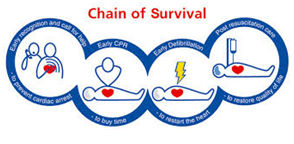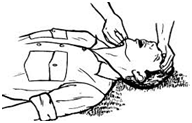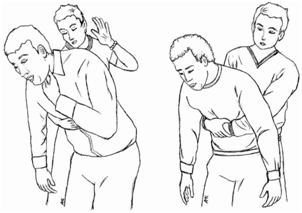Being around a medical emergency is never a pleasant experience. Remaining calm and performing a few easily learnable manoeuvres could often be the difference between life and death, literally. Below is a brief overview of what one can do if faced with such an emergency:
Importance of Cardio-pulmonary resuscitation
There are approximately 700,000 cardiac arrests per year and the survival to hospital discharge rate is presently approximately 5-10%. Bystander CPR (cardio pulmonary resuscitation) is a vital intervention before the arrival of emergency services that doubles or triples survival from sudden cardiac arrest. Once the heart ceases to function, a human brain may survive for up to 4 minutes without suffering any permanent damage. Unfortunately, a typical EMS (emergency medical services) response may take up to 10 minutes. It is during these critical minutes that CPR can provide oxygenated blood to the victims’ brain and heart dramatically increasing the likelihood of survival. If instructed properly anyone can provide CPR.
Basic Life Support (BLS) refers to the care provided to patients who are experiencing respiratory arrest (absence of breathing), cardiac arrest (absence of pulse) or airway obstruction. Chest compression and pulmonary ventilation can be provided by anyone who knows how to do it, anywhere and without the need for any equipment.
Chain of Survival

Components of BLS
1) Ensure safety– Check surroundings to ensure safety of self, safety of victim and movement of a trauma victim only when absolutely necessary.
2) Check Response – Shake the shoulders of the victim and ask if the person is alright. If the victim responds, leave him/her as you find him/her and reassess regularly. In such a case there is no need for CPR.
3) Shout for help/Activate EMS– CALL 108 and describe the emergency to the operator in terms of the location of the incident and the condition of the victim.
4) C-A-B (Circulation-Airway-Breathing)
Circulation
When there is no definite pulse felt for 10 seconds, proceed with chest compression immediately. Following are the instructions to be followed:
Position of rescuer

- Keep the victim on a Firm surface (backboard or floor)
- kneel besides victim’s chest or stand beside the bed.
- Place the heel of one hand over the lower half of the sternum (breast bone)
- Place the heel of the other hand on top of the first so that the hands are over lapped and parallel.
- Lock the elbows
Chest Compression
- “Push hard and push fast” at the rate of 100-120/min.
- Compression depth should be of at least 2 inches but not more than 2.5 inches.
- Then release completely to allow the chest to fully recoil. The compression to ventilation ration must be of 30:2.
- Never use the palm of your hand, use the heel of your hand.
- When 2 or more rescuers are available, switch the compressor about every 2 minutes. Accomplish this switch <5 seconds.
- Lay rescuers should continue CPR till help arrives.
AIRWAY
Head tilt and chin lift (as seen below) can be performed by any rescuer.

Heimlich manoeuvre is a first aid procedure to dislodge an obstruction from a person’s windpipe. Place a fist just above the navel, grab your fist with your other hand and push inwards and upwards at the same time. Perform five of these abdominal thrusts. Repeat until the object is expelled and the person can breathe/cough on his/her own.

BREATHING
Check breathing of the victim at all times.
– After the first 5 sets of chest compressions, airway is opened and rescuer delivers two breaths.
– Use a barrier device and deliver rescue breath for over 1 second. Make sure that there is sufficient volume to produce a chest rise of 500-600ml.
5) Early Defibrillation an AED-Automatic external defibrillator, on applying to victim, assesses the hearts rhythm and prompts the user for further action.
-One shock has to be given each time the AED advices “Shock” and then resume CPR immediately
-After two minutes, AED will automatically start analysing again and prompt accordingly.
6) Continue Resuscitation until qualified help arrives and the victim revives and breathes normally.
Dr. Leon Franco Da Silva